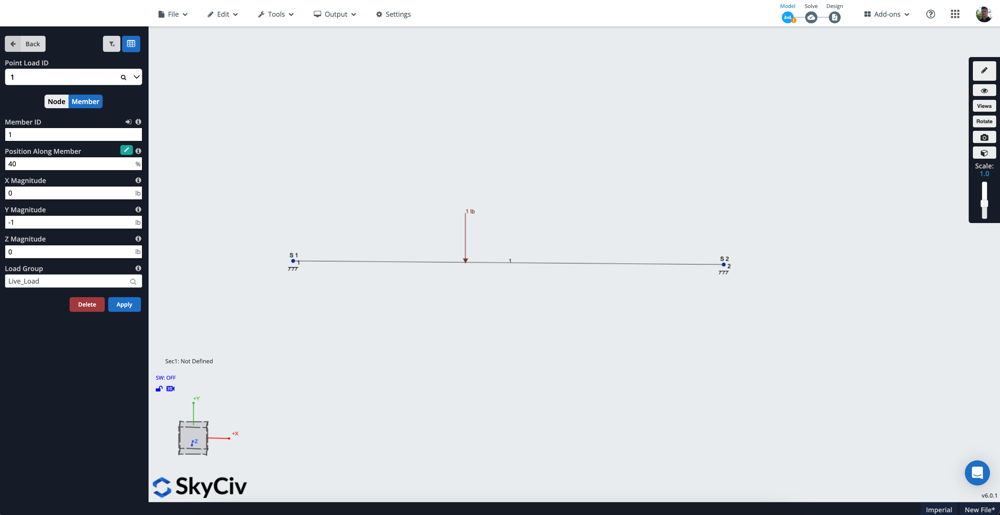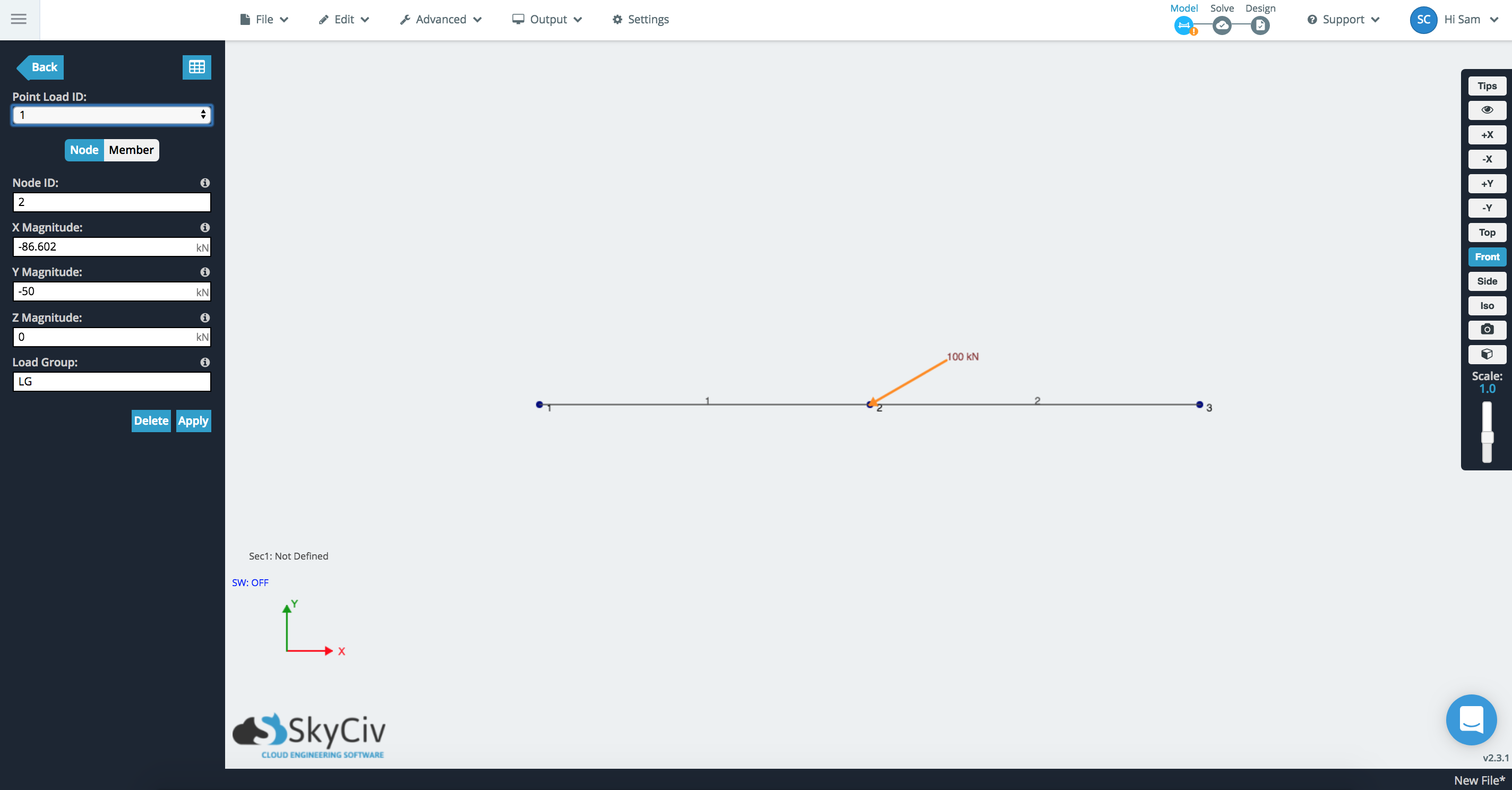点荷重は、節点または部材とともに点に加えることができる力です。. 非線形解析にはP-Deltaが含まれます, 場所, マグニチュード, 標識の方向を指定する必要があります. 節点またはメンバーに対してある角度で適用される力は、X を指定することによって指定できます。, そして, 力の Z 成分.
節点に適用される点荷重
ノードに点荷重を適用するには, の値を指定するだけです:
- 点荷重ID – 各点荷重を識別するために使用される数値 ID.
- メンバーがいます – 点荷重が適用される節点.
- Xマグニチュード – グローバル X 方向の力の大きさ. 負の X 方向を指定するには、負の値を使用します。.
- そしてマグニチュード – グローバル Y 方向の力の大きさ. 負の Y 方向を指定するには、負の値を使用します。.
- マグニチュードから – グローバル Z 方向の力の大きさ. 負の Z 方向を指定するには、負の値を使用します。.
- 負荷グループ – 荷重は、荷重グループ番号でグループ化できます. 荷重グループ名を記入します. 荷重グループは特定の荷重ケースに割り当てられ、「荷重コンボ」の係数で乗算できます。’ メニュー. オプション.

部材に適用される点荷重
部材に点荷重を適用するには, の値を指定するだけです:
- メンバーID – 点荷重がかかる部材.
- メンバーに沿った位置 – の % 位置 (ノードAからBへ) 力が加えられる部材に沿って. 注意: ユーザーは距離を指定できます (パーセントではなく) 片端から
- Xマグニチュード – グローバル X 方向の力の大きさ. 負の X 方向を指定するには、負の値を使用します。.
- そしてマグニチュード – グローバル Y 方向の力の大きさ. 負の Y 方向を指定するには、負の値を使用します。.
- マグニチュードから – グローバル Z 方向の力の大きさ. 負の Z 方向を指定するには、負の値を使用します。.
- 負荷グループ – 負荷は次のようにグループ化できます。 負荷グループ 数字. 次に、負荷グループに「負荷コンボ」の係数を掛けることができます。’ メニュー. オプション.

角度のある荷重
以下は、点荷重を斜めに加える方法の短い例です。. 例えば, XY 平面に対して 30 度の角度で -100kN の荷重を適用するとします。. 無限の平面と方向があるので、この点荷重を適用できると考えられます。, 角度にかかる力を指定するには大きさを使用する必要があります.
力を 2 つの部分に分割する必要があります: X の大きさと Y の大きさ, これを次のようにします:
Xmag = -100cos(30) = -86.602 kN
Ymag = -100sin(30) = -50 kN
これを組み合わせると、 100 kN の力 30* 角度:


